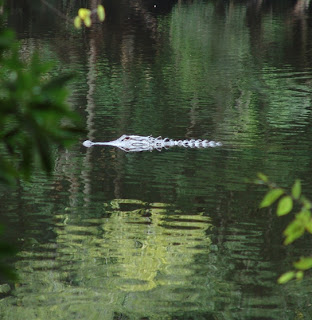

ASC operates two centers. Francis Beidler Forest in Four Holes Swamp is a 17,000-acre wildlife sanctuary featuring a 1-3/4 mile boardwalk through an old-growth cypress-tupelo swamp. Open Tues-Sun (closed Mon. & some holidays; admission fee). Silver Bluff along the Savannah River has 3,154 acres of upland pine forest, hardwood bottomlands, fields, lakes and streams with a checklist of over 200 species, including Wood Storks! Ed. programming and tours. Images © FBF, 2006-2016.












 Ironweed (Vernonia angustifolia), which is a member of the Aster or Sunflower family. The are common in the open, dry, sandy areas like the burned over Longleaf Pine (Pinus palustris) restoration tract. The large clusters of white flowers are Broad-leaved Eupatorium (Eupatorium rotundifolium)
Ironweed (Vernonia angustifolia), which is a member of the Aster or Sunflower family. The are common in the open, dry, sandy areas like the burned over Longleaf Pine (Pinus palustris) restoration tract. The large clusters of white flowers are Broad-leaved Eupatorium (Eupatorium rotundifolium) , which is also a member of the Aster or Sunflower family commonly found in Longleaf Pine flatwoods or savannas. The yellow flowers are St. Peter's-wort (Hypericum stans)
, which is also a member of the Aster or Sunflower family commonly found in Longleaf Pine flatwoods or savannas. The yellow flowers are St. Peter's-wort (Hypericum stans) , which is a member of the St. John's-wort family and another disciple of Longleaf Pine flatwoods or savannas.
, which is a member of the St. John's-wort family and another disciple of Longleaf Pine flatwoods or savannas. 



Here are the highlights from the last year's Daniel Island cleanup:
All participants should meet at the Children’s Park on River Landing Dr. at 9:00 a.m.
An Audubon South Carolina staff member will be at the site to provide directions, trash bags and water. Participants should bring work gloves and be prepared to get their feet wet and muddy. Sturdy, closed-toe shoes are recommended along with sunscreen, hats, and insect repellent.
The statewide event is organized by the S.C. Sea Grant Consortium and S.C. Department of Natural Resources. Beach Sweep River Sweep is held in conjunction with The Ocean Conservancy’s International Coastal Cleanup. The 2006 results for this site can be found (line 32) here and images can be found here.
If you would like to participate at this site or need further information, including maps and directions, please contact: Mark Musselman at Audubon South Carolina (843) 462-2150, mmusselman@audubon.org.












This Black-and-yellow Argiope is quite patient. During a day of observation on her web just beyond the computer screen, she has moved exacty twice. Once to pounce on and quickly devour a tiny flying insect and once to pounce on, wrap up, and slowly drain a medium-sized fly. The rest of the day has been spent as seen in the image. Patiently waiting for the next meal to fly through what likely appears to be an opening in the forest though, the web and clean glass would demonstrate otherwise.

The King, the Mice and the Cheese by Nancy Gurney and Eric Gurney points out the folly and unintended consequences of removing an unwanted species from the the environment. In the story the king wanted the mice removed since they were eating his cheese. He had cats chase away all the mice, but then was unhappy with the behavior of the cats. The king had dogs chase away the cats, but then found the multitude of dogs to be an issue. After elephants called to remove the dogs began to destroy the palace, the king invited the mice to return to remove the elephants(because we all know how elephants hate mice) . The king and the mice then agreed to coexist.





